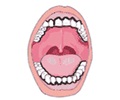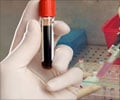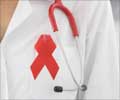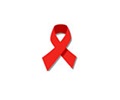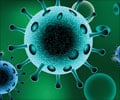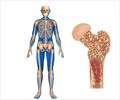Glossary
AIDS (Acquired Immune Deficiency Syndrome): An infection due to HIV (Human Immunodeficiency Virus) that severely damages the immune system.
Absolute CD4 cell count: the number of CD4 cells in a cubic millimeter (mm3) of blood.
Acute: reaching a crisis quickly; severe.
Acute HIV infection: The period of rapid viral replication immediately following exposure to HIV.
AIDS-defining illness: a condition (e.g., Pneumocystis carinii pneumonia, toxoplasmosis, Kaposi's sarcoma) that is included in the Center for Disease Control and Prevention's CDC definition of AIDS.
AIDS drugs: An online database service of the National Library of Medicine with information about drugs undergoing testing against HIV infection, AIDS, AIDS-related complex, and related opportunistic diseases.
AIDS drug assistance program (ADAP): a state program that provides drugs for HIV/AIDS and related opportunistic infections to individuals who otherwise could not afford them.
AIDS-related cancers: Several cancers are more common or more aggressive in persons living with HIV.
Anti-inflammatory: acting against inflammation.
Antibiotic: an agent that inhibits the growth of or destroys microorganisms; the term typically refers to an agent that is active against bacteria.
Antiretroviral: a substance that kills or suppresses a retrovirus, such as HIV. All of the anti-HIV drugs --AZT, protease inhibitors, etc. -- are considered antiretroviral drugs.
Azithromycin: a macrolide antibiotic used to treat Mycobacterium avium complex (MAC) disease, chlamydiasis and urinary tract infections.
Cancer: a group of diseases characterized by abnormal growth (neoplasm, tumor) and spread to other parts of the body (metastasism).
CD4: a protein embedded in the surface of some T-cells and certain other cells (e.g., macrophages, Langerhans cells, glial cells). HIV invades cells by attaching to their CD4 receptor.
CD4 count: The number of helper T-lymphocytes in a patients blood usually expressed as the number of cells per cubic millimeter. When this value drops below 200, the patient has AIDS.
Cell antiviral factor: a factor produced by CD8 cells that is hypothesized to block viral infection during the HIV latency period and in long-term nonprogressors.
CKR5 (CCR5, CC-CKR5): a protein found on certain blood cells that serves as a receptor site for chemokine. CKR5 acts as a co-receptor which HIV uses to infect cells. Individuals who lack a functional copy of the gene that makes CKR5 are believed to be non-susceptible to HIV infection.
Clindamycin: an antibiotic used as treatment and prophylaxis for toxoplasmosis and treatment of PCP in combination with other drugs.
T-helper cell: A subset of T cells. Physicians regularly measure T-helper cell counts in HIV positive people. The normal range for T-helper cells is 480-1800, but may vary.

